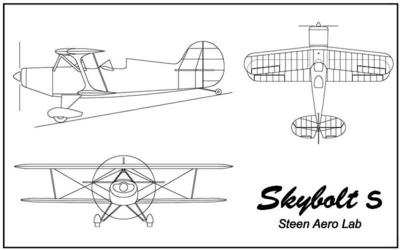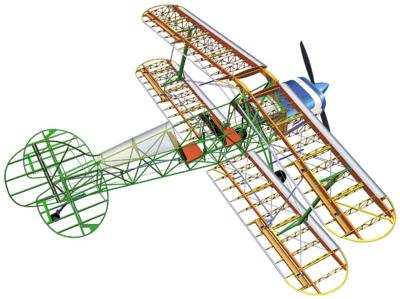Mon, Oct 17, 2011
Structural Failure In-Flight: About As Serious As It
Gets...
No one has to tell you that there are a few instances in
aviation when the pucker factor is at an all-time high... and a
structural failure is pretty close to the top of the list. There is
a reason why most aerobats wear a chute (and should)... and that is
the result of the more extensive stresses and forces involved in
aerobatic flight... and the possibility that a small problem or
failure can progress to a much larger one. In this case, the pilot
made the solid decision that trying further flight in a compromised
airplane was not smart and elected to air out his chute. Smart.

NTSB Identification: WPR11LA459
14 CFR Part 91: General Aviation
Accident occurred Monday, September 19, 2011 in Greenleaf, ID
Aircraft: MCARTHUR STEEN SKYBOLT, registration: N77VW
Injuries: 1 Uninjured.
From The NTSB Prelim: On September 19, 2011,
about 1315 mountain daylight time, a McArthur Steen Skybolt, N77VW,
collided with terrain following an uncontrolled descent near
Greenleaf, Idaho. The pilot was operating the experimental
amateur-built airplane under the provisions of Title 14 Code of
Federal Regulations (CFR) Part 91. The airline transport pilot was
not injured, and the airplane sustained substantial damage during
the accident sequence. The local flight departed Caldwell, Idaho,
about 1255. Visual meteorological conditions prevailed, and no
flight plan had been filed.
The pilot was performing an aerobatic routine in a practice
area. He completed the routine uneventfully, and elected to perform
it a second time. During the initial dive, he began to level the
airplane, and observed the outboard trailing edge section of the
upper left wing fail. He observed canvas material in trail from the
aft spar, and could not see any wing ribs attached to the spar. He
regained partial control of the airplane, but elected to bail out a
short time later. The airplane subsequently rolled inverted, and
began a near-vertical descent into a field.


More News
Aero Linx: Model Aeronautical Association of Australia MAAA clubs are about fun flying, camaraderie and community. For over 75 years, the MAAA has been Australia’s largest fl>[...]
Touchdown Zone Lighting Two rows of transverse light bars located symmetrically about the runway centerline normally at 100 foot intervals. The basic system extends 3,000 feet alon>[...]
“Discovery and innovation are central to our mission at Virgin Galactic. We’re excited to build on our successful record of facilitating scientific experiments in subor>[...]
How To Get A Story On Aero-TV News/Feature Programming How do I submit a story idea or lead to Aero-TV? If you would like to submit a story idea or lead, please contact Jim Campbel>[...]
Student Pilot Reported That During Rotation, “All Of A Sudden The Back Of The Plane Kicked To The Right..." Analysis: The student pilot reported that during rotation, “>[...]
 ANN's Daily Aero-Linx (05.02.24)
ANN's Daily Aero-Linx (05.02.24) ANN's Daily Aero-Term (05.02.24): Touchdown Zone Lighting
ANN's Daily Aero-Term (05.02.24): Touchdown Zone Lighting Aero-News: Quote of the Day (05.02.24)
Aero-News: Quote of the Day (05.02.24) ANN FAQ: Contributing To Aero-TV
ANN FAQ: Contributing To Aero-TV NTSB Final Report: Cirrus Design Corp SR20
NTSB Final Report: Cirrus Design Corp SR20





